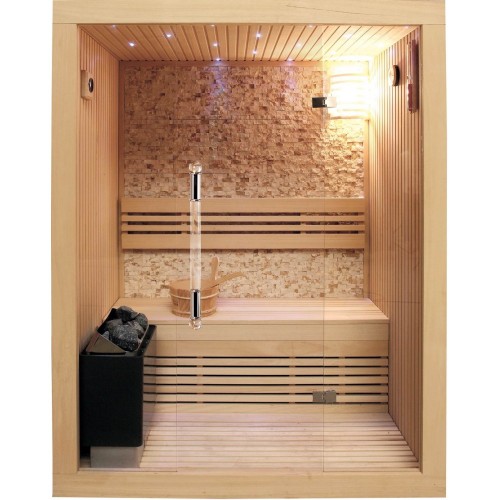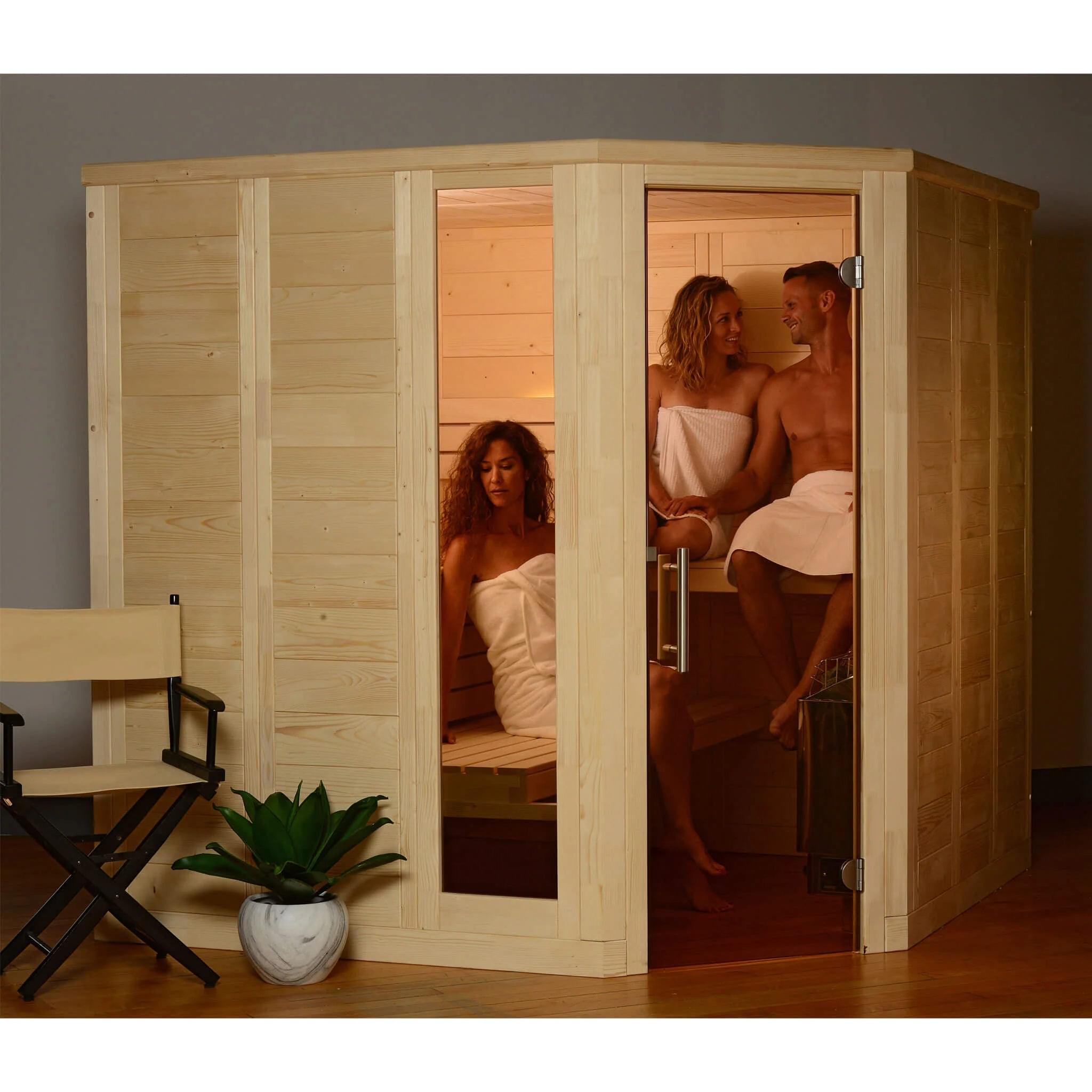The Buzz on Traditional Sauna
The Buzz on Traditional Sauna
Blog Article
Indicators on Traditional Sauna You Should Know
Table of ContentsExamine This Report on Traditional SaunaThe Best Strategy To Use For Traditional SaunaTraditional Sauna Fundamentals ExplainedThe Ultimate Guide To Traditional SaunaThe Single Strategy To Use For Traditional Sauna
A lot of the weight shed in a sauna is water loss and is re-gained upon rehydrating. Without an uncertainty sauna can be an important part of a healthy weight loss program. To take a look at the differences between conventional and IR saunas, I will separate these into proven, academic, and made distinctions.Hence, the best point in the saunawhich goes to the ceiling straight over the sauna heateris normally in between 185 and 190 F. Claims that a typical sauna goes beyond 200 F is merely not real and not suitable for electric saunas sold in the US. The temperature level for a far-infrared sauna is usually established in between 120 and 140 F; nevertheless, unlike the conventional sauna, the goal in and IR room is not to attain a heat.
Due to the fact that of this, the temperature level difference is almost irrelevant, given that extreme sweating leads to both sauna types, but the approach of heating up the body is different. In an IR sauna the bather will really feel warm and will certainly sweat profusely, yet at a lot lower temperature levels. Traditional Sauna. Therefore, if the goal is to invest longer amount of times in the sauna, the IR sauna is a good selection

Things about Traditional Sauna

When the high temperature level is achieved, the elements cycle on and off to maintain the heat. Traditional Sauna. A lot of standard sauna customers appreciate putting water over the rocks to develop vapor to elevate sauna moisture degrees. The advantages of putting water over the rocks consist of: making the area extra comfy, dampening the nasal flows, and enabling the use of aromatherapy by mixing important oils with the water
In a far-infrared sauna, the warm front permeate the body to efficiently heat up the body and raise the body core temperature. To achieve this increased temperature level, Far-infrared emitters produce infrared energy which is close to the very same wavelength as that which the body naturally emitsoften described as the "Essential Array" of 7 to 14 microns), so the power is well received by the body.
When the power goes into the body, it causes the body temperature level to enhance and ultimately leads to perspiration. In an infrared sauna it's essential for the emitters/heaters to stay on nearly constantly. Because there is no mass of rocks to maintain warmth, the sauna will certainly cool if the emitters shut down.
Excitement About Traditional Sauna
As discussed above, the sauna bather in an infrared room intends to position himself in front of running emitters to obtain maximum take advantage of the warmth. The heating time for the 2 areas can be very different, depending upon exactly how the rooms are made use of. For a traditional sauna, a bather ought to enable 30-40 mins for the space to accomplish a preferred temperature and to correctly pre-heat the rocks.
A well created sauna will normally achieve a temperature of 150-160 F in about 30-40 mins. For hotter temperatures, the room might require to warmth for a longer period.

Standard saunas tend to be larger (thus utilize even more electrical power) than infrared saunas, although traditional saunas are absolutely readily available in one and two individual dimensions. For a two-person conventional sauna, 5x6 or 5x7 dimension is most popular. The leading bench can easily seat two or 3 individuals and is likewise enough time to relax throughout the sauna session.
Facts About Traditional Sauna Revealed
The typical expense per kWH of electrical power in the united state is approximately $0.11 - Traditional Sauna, so a 4.5 kW heater will certainly cost approximately $.50 to compete one hour, if the heating unit runs continuously for one hour. Normally a sauna heater will compete 75% of the initial hour and 50% of subsequent hours on considering that the components cycle once the established temperature is achieved
A two person far-infrared room is generally literally smaller than a standard sauna, typically regarding 4' x 4' or smaller. The IR heater is commonly 1.5-1.7 kW utilizing a 120 volt 15 amp plug-in service. Considering that the space can be utilized quicker than a sauna area, we will think the space is used for to of an hour consisting of warm up time.
Ultimately, there is a seldom talked about difference in the social experience between the two areas. While our society has you can try these out lost several of the social advantage of the conventional sauna experience, it can be extremely socially rewarding. From family time in the sauna, to heart-felt discussions with better halves, to sauna partiesthe standard sauna experience can lead to intimate socializing.
An Unbiased View of Traditional Sauna
Most higher end infrared spaces consist of colored light therapy, sound systems and full-glass fronts.
Report this page